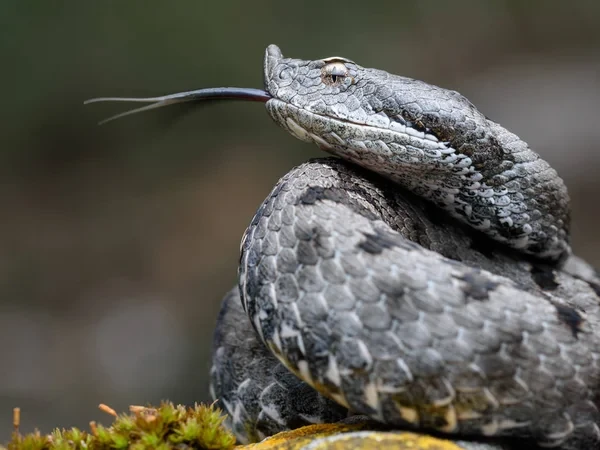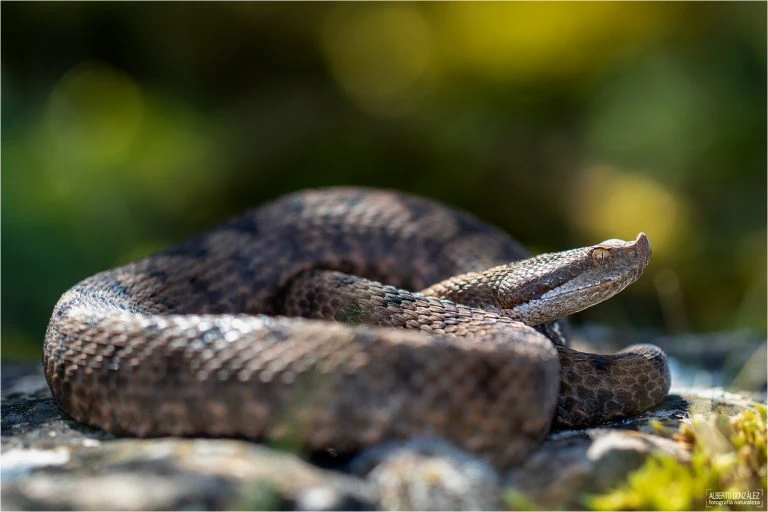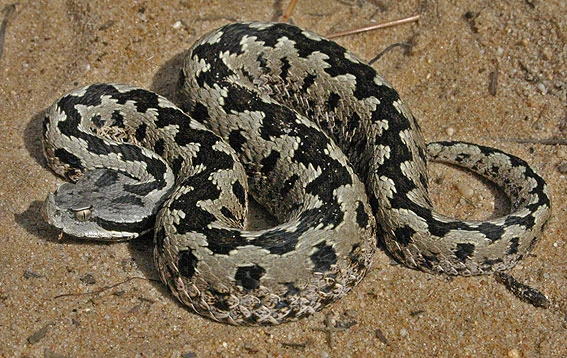Welcome! In this article, you will learn about a surprising creature: the Horned Viper. Not only that, but you will also discover why it is endangered and what you can do to help. Are you ready to explore a fascinating and challenging world? Keep reading!
What is it?
The Horned Viper, scientifically known as “Vipera latastei,” is a species of viper native to the Iberian Peninsula and northwest Africa. Its peculiar name? It comes from the slightly upturned snout that characterizes this snake.

Characteristics
It usually has a length of between 60 and 75 cm, although some specimens can exceed a meter. Its body is robust and features a zigzag pattern of spots along its back, with colors ranging from grays, browns, and blacks. Additionally, its triangular head and the aforementioned upturned snout stand out.
Where does it live?
The distribution of this viper is mainly in mountain areas, although it can inhabit a variety of ecosystems, from rocky areas to forests and meadows. They are adaptable creatures that can survive in different environments, although they prefer cool and humid areas.
Did you know? Unlike other snakes, the Horned Viper does not stick out its tongue to gather sensory information. Instead, it uses its nostrils. Click To TweetWhat does it eat?
This snake is a versatile predator, feeding mainly on rodents, lizards, and even smaller snakes. They use their venom to paralyze their prey before swallowing them.
How does it reproduce?
They are ovoviviparous, meaning they retain the eggs inside their body until they are ready to hatch. Thus, the offspring are born fully formed.
Did you know? Although the Horned Viper is venomous, it has natural predators, like the genet, which are immune to its venom. Click To TweetVenom, Bite, and Behavior
Despite its formidable appearance, the Horned Viper is not aggressive and only bites in self-defense situations. Its venom, although potent, is rarely fatal to humans. However, it is essential to seek medical attention immediately in case of a bite.

Curiosities
An intriguing curiosity about this species is that it can live up to 20 years, a relatively long life for a snake.
Did you know? Horned Vipers can swim and are often found near bodies of water, but they prefer to stay on solid ground. Click To TweetWhy Is It Endangered?
Its conservation status is concerning due to habitat destruction, indiscriminate hunting, and persecution by humans who often see them as a threat. Although they are venomous snakes, they only attack in self-defense, and their bite is rarely fatal to humans.
Conservation Status
The conservation status of the Horned Viper is alarming. It is currently on the endangered species list, meaning that if we do not take steps to protect these creatures, we could lose them forever. However, not everything is negative, as various organizations and projects are working hard to protect and conserve these snakes, and you can contribute too.
It is primarily crepuscular, meaning it is most active at dawn and dusk.
This snake can survive in cold climates, hibernating during the coldest months of winter.
No, it is illegal and not recommended to keep it as a pet due to its conservation status and venomous nature.
No, although its venom can be dangerous, it is not the most venomous snake in Spain.
As they are ovoviviparous, they do not lay eggs. Instead, they can have 2 to 12 offspring per litter.
How Can We Help?
The best way to protect the Horned Viper is by respecting its habitat and promoting education about its importance in the ecosystem. They are not malevolent creatures but a vital part of our natural world. Share with others what you have learned.

